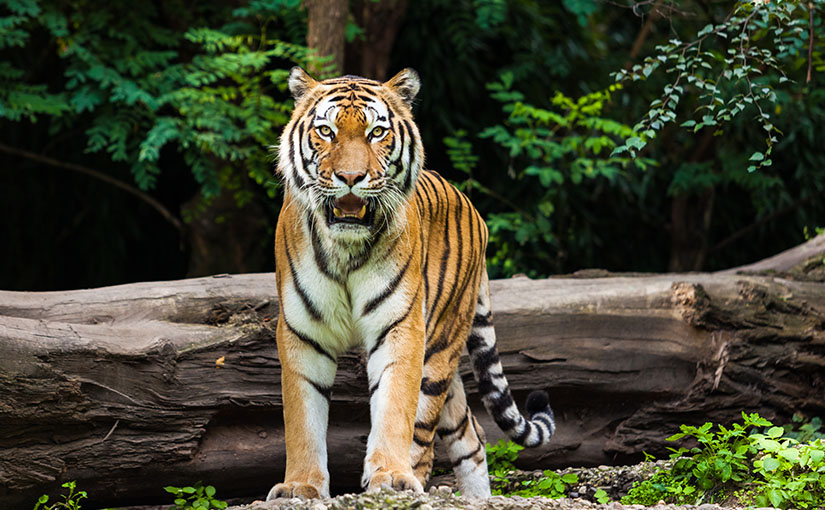The Hidden Tigers of Southeast Asia (Part 2)
The Hidden Tigers of Southeast Asia (Part 2)
28 Oct 2019
PART 2: FROM ANECDOTE TO EVIDENCE
Stories of tiger encounters have kindled hope in the hearts of those most concerned over the fate of Myanmar’s most elusive big cat, but for any hope of securing their future, conservationists first need to find out where they are, and prove it. Over the past three years conservation organisations have been conducting camera trap surveys in three important areas for tiger conservation spanning the North and South of the country. Despite fears, the surveys garnered astonishing results. Not only did the camera traps capture images of all of the tiger’s prey species, they also provided photographic evidence of at least 22 tigers living in Myanmar.

WHAT DO THE NUMBERS MEAN?
22 is the absolute minimum number of tigers living in Myanmar. For a number of reasons including logistical challenges, inaccessibility and conflict, only 8% of 46,000km2 of potential tiger habitat has been surveyed so far. The more likely case scenario is that there are many more individuals, but scientists don’t make rough estimates. Arguably the most important revelation to come to light through these surveys is the evidence we now have of tiger breeding.
The IUCN Red List currently states that tigers are still resident in Myanmar, but the small print reads “no breeding population”, which is conservation code for game over.
Now the game is back on.
“We saw three individuals together, a tigress with her cubs,” says Hla Naing who conducts biodiversity surveys with WCS. “We think the cubs were around two and a half years old. This is really promising evidence. If the cubs are very young then the mortality rate is high, but at this age their chances are much better.”
Tigers are prolific breeders. “Anyone who has lived around feral cats knows how fast they breed.” Says Mark Grindley, Programme Manager for FFI’s Tanintharyi programme. “Tigers may be a little slower on the timeline but they are just cats. They breed fast, so their numbers can rebound quickly, but we need to ensure there is sufficient prey, and that we have wildlife corridors so that tigers can move freely from one area to another to breed.”
Myanmar’s 22 tigers can become many more, and for this endangered species every individual counts. In 2010 a global goal to double tiger numbers was set by an initiative called TX2, and given enough space and protection Myanmar will contribute significantly to that TX2 goal.
GIVEN ENOUGH SPACE AND PROTECTION MYANMAR WILL CONTRIBUTE SIGNIFICANTLY TO THE GLOBAL
GOAL TO DOUBLE TIGER NUMBERS.
MEET THE BIOLOGIST.
In episode two of The Hidden Tigers, you’ll hear from Paing Soe. He’s a conservation biologist for WWF-Myanmar, and one of the many people who has been involved in conducting research to establish the new minimum tiger number. Having grown up in Myanmar Paing Soe has witnessed first hand a rapidly changing landscape, and the impacts it has had on wildlife.
“15, maybe 20 years ago I lived in places where deer would jump around your yard. In broad daylight wildlife would cross the road in front of you. These days, that is highly unlikely. Wildlife is in decline in Myanmar just like it is all over the world. The difference, I believe, is that we still have a lot of places that are worth saving.”
For him, tiger conservation is not just about tiger conservation – it’s about saving Myanmar’s natural heritage. “We count tigers because we are trying to save Myanmar’s nature. When tigers are present, you can generally infer that the ecosystem is thriving, so we use them like a metric. It takes a whole lot of effort to save tigers and increase their numbers, but once you know you’re keeping tiger numbers stable, you can be sure that their habitat is thriving with all the other significant wildlife.”
“I’ll never forget the first time we had evidence of tiger presence in an area that had never been surveyed before. I literally jumped for joy.” Paing Soe, Conservation Biologist, World Wildlife Fund, Myanmar (WWF-Myanmar)
WWF biologist checks the sensor of a newly set up camera trap © Hkun Lat/ WWF-Myanmar









